#Charbel Youssef
Text

Youssef Antoun Makhlouf was born in 1828, in Bekaa Kafra (North Lebanon). He had a true Christian upbringing, which had given him a passion for prayer. Then he followed his two hermit uncles in the hermitage of the St Antonious Kozhaya monastery and was converted to monastic and hermetical life.
In 1851, he left his family village and headed for the Our Lady of Maifouk monastery to spend his first monastic year, and then he went to the St Maron monastery in Annaya, where he entered the Maronite Order, carrying the name Charbel, a name of one of the Antioch church martyrs of the second century. On November 1st. 1853, he exposed his ceremonial vows in St Maron’s monastery - Annaya. Then he completed his theological studies in the St Kobrianous and Justina monastery in Kfifan, Batroun.
He was ordained a priest in Bkerky, the Maronite Patriarchate, on July 23rd, 1859. He lived 16 years in the St Maron's monastery – Annaya. From there, he entered, on February 15th, 1875, the St Peter & Paul hermitage, which belongs to the monastery. He was a typical saint and hermit, who spent his time praying and worshipping. Rarely had he left the hermitage where he followed the way of the saintly hermits in prayers, life and practice.
St Charbel lived in the hermitage for 23 years. On December 16th, 1898 he was struck with an illness while performing the holy mass. He died on Christmas' eve, December 24th, 1898, and was buried in the St Maron monastery cemetery in Annaya.
Few months later, dazzling lights were seen around the grave. From there, his corpse, which had been secreting sweat and blood, was transferred into a special coffin. Hordes of pilgrims started swarming the place to get his intercession. And through this intercession, God blessed many people with recovery and spiritual graces.
In 1925, his beatification and canonization were proposed for declaration by Pope Pious XI. In 1950, the grave was opened in the presence of an official committee which included doctors who verified the soundness of the body. After the grave had been opened and inspected, the variety of healing incidents amazingly multiplied. A multitude of pilgrims from different religious facets started flocking to the Annaya monastery to get the saint's intercession.
Prodigies reached beyond the Lebanese borders. This unique phenomenon caused a moral revolution, the return to faith and the reviving of the virtues of the soul.
5 notes
·
View notes
Photo

THE DESCRIPTION OF SAINT CHARBEL MAKHLOUF
The Patron of Lebanon
Feast Day: July 24
"St. Sharbel is called the second St. Anthony of the Desert, the Perfume of Lebanon, the first Confessor of the East to be raised to the Altars according to the actual procedure of the Catholic Church, the honor of our Aramaic Antiochian Church, and the model of spiritual values and renewal. Sharbel is like a Cedar of Lebanon standing in eternal prayer, on top of a mountain." -Bishop Francis Zayek during Charbel's canonization Mass in 1977
A Maronite monk and priest, he was born Youssef Antoun Makhlouf, on May 8, 1828, in Bekaa Kafra, Mount Lebanon, Ottoman Empire. Bekaa Kafra is a village located in the Bsharri District. He was one of five children. His father, Antoun Zaarour Makhlouf, was a mule driver who died in August 1831 while returning from corvée for the Turkish army, leaving his wife Brigitta (née Chidiac) a widow to care for their children. She remarried a man who later was ordained as the parish priest of their village. Youssef was raised in a pious home, and became drawn to the lives of the saints and the eremitical life practiced by two of his uncles, and while shepherding the family flock, he would spend the day in prayer. He would take the herd to a nearby grotto, where he had enshrined an icon of the Blessed Virgin Mary.
In 1851, inspired by two of his uncles, he entered the Lebanese Maronite Order (aka the Baladites) at the Monastery of Our Lady in Mayfouq (a village and municipality in the Byblos District of Keserwan-Jbeil Governorate). He later transferred to the Monastery of Saint Maron in Annaya, in the Byblos District near Beirut. And here, he received his habit and took the religious name of Charbel, after the 2nd-century Christian martyr of Antioch. After his ordination on July 23, 1859 in Bkerke, he was sent to the Monastery of Saint Maron, where he lived as a solitary hermit and severe asceticism.
In 1875, Charbel was granted by the abbot of the monastery the privilege of living as a hermit at the Hermitage of Saints Peter and Paul, a chapel under the care of the monastery. He spent the next 23 years living alone until his death from a stroke on December 24, 1898 at the age of 70, holding the Holy Eucharist in his hands.
A few months after his death, a bright light was seen surrounding his tomb. When the superiors opened it, the body was incorrupt. In the years 1950 and 1952, his tomb was opened and his body still had the appearance of a living one. He was canonized as a saint on October 9, 1977 by Pope Paul VI, who said: 'He makes us understand, in a world largely fascinated by wealth and comfort, the paramount value of poverty, penance and asceticism, to liberate the soul in its ascent to God.'
A great number of miracles have attributed to the saint since his death, with a total of more than 26,000.
14 notes
·
View notes
Text
Should Muslims believe in the Torah and Gospel that Jews and Christians have? (Part 1)

Should Muslims believe in the Torah and Gospel that Jews and Christians have? - Part 1 http://gottergebenheit.bplaced.net/injilturae.html gottergebenheit. bplaced. net/injilturae.html https://youtu.be/9-YS92yQfe8 = youtu. be/9-YS92yQfe8 https://www.facebook.com/shjjfb https://twitter.com/shjj_tw #Distortion of the Gospel #Distortion of the Torah What is the Gospel? What is the Torah? People of Scattering Enlightenment Sahih Al-Bukhari The Companions, may God be pleased with them Sahih Muslim Sufyan Al-Thawri Deniers of the Sunnah Denial of the Sunnah Saber Mashhour Islamic Affairs Osama Fawzi Muhammad bin Shams Al-Din Brother Rashid Maguy Khuzam The Qur’anists Criticism of Christianity Hassan Farhan Al-Maliki Kamal Al-Haidari Zaghloul Al-Najjar The Fighter of Suspicions Saints in Christianity Saint Charbel Pope Francis Pope Benedict Muhammad Shaheen Al-Taab Islamic Dawa Channel Saeed Al-Sarfandi Enlightenment Enlightenment People Ahmed Subaie Al-Bayna Channel for Comparing Religions and Responding to Suspicions Ahmed Mansour Ahmed Subhi Mansour Brother Wahid Muhammad bin Shams al-Din Abdul Rahman Damascus Saleh al-Maghamisi Hamid Muhammad Shahrour Muhammad Hussein Yaqoub Munqith al-Saqqar Jeffrey Lang Sam Gerrans Zakaria Boutros Jeffrey Lang Issam Talimah Moaz Alyan The People of Scattering Fella Wajdi Ghoneim Yasser Al-Habib Adnan Al-Rifai A Christian who converted The People of Hadith Ibrahim Issa calls Zakaria Ozon Samer Islambouli The People of Hadith Raed Akkari The Qur’an Mahmoud Daoud Othman Al-Khamis Abdul Samad Liberalism Secularism Abu Salah Shiites Sunnis People of Hadith Religion Ibn Ibrahim Abu Arafa Al-Huwaini Youssef Al-Qaradawi Ali Jumaa Islam Buhairi Adnan Ibrahim Naji Abu Omar Al-Baheth The decision to remove Omar Abdel Kafi Hamid Abdel Samad Islam from the Qur’an The Sunnah The Hadith The Old Testament Mansour Al-Kayyali The New Testament The Deniers of the Sunnah The Deniers The Gospel The Torah The Talmud Ayed Al-Qarni Muhammad Al-Arefi Left-wing Communism Globalization The Arabic Language The Tongue Arabic Bible Translations Bible German Abdul Rahman Zakir Al Hashemi Iyad Qunaibi The Qur’anists Eve Youssef Zidane Ahmed Saad Zayed Sufism
source
Read the full article
0 notes
Text
THE LURKING FEAR (2023) Reviews of Tubi Original horror
‘Fear is only the beginning’
The Lurking Fear is a 2023 American supernatural horror film about a TV crew that encounters demons at an abandoned mental institution.
Written and directed by Darren Dalton (writer of written The Day That Time Forgot and The Day the Earth Stopped) and Robert Gillings (American Fright Fest). Produced by Bernard Salzmann, James Tamburino and Charbel Youssef. Executive…
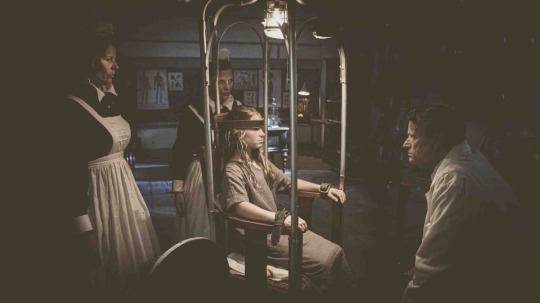
View On WordPress
#2023#Elisabetta Fantone#Gianni Capaldi#horror#Luis Da Silva Jr#Michael Madsen#movie film#review reviews#Robert Davi#Skye Stracke#The Lurking Fear#trailer#Tubi Original
0 notes
Text
Shark Lake (2015) #SharkWeak3🦈 Review
There's something really fishy about Dolph Lundgren 'starring' lakeside thriller Shark Lake (2015) #SharkWeak3 #Review

Far from the high concept carcharodon carry-on of the likes of “6-Headed Shark Attack” or “Sharkenstein”, “Shark Lake” sets out to position itself as a gritty and grounded shark thriller. A gritty and ground shark thriller which begins with Clint Gray (Dolph Lundgren), a rare animal smuggler, going on the run with a bull shark in the back of a van. Yep.
The van crashes into the lake and the…
View On WordPress
#SharkWeak#SharkWeak3#2015#4/10#Alexandra Bujan#Andrew Stern#Bobbie Burn#Bobby C King#Carol Ann Scruggs#Chad A Verdi#Charbel Youssef#Chris Conover#Christine Hilts#Damiano Tucci#Daniel Zirilli#Danny Roth#David Anderson#Dolph Lundgren#Ele Bardha#Ernie James Paris#Frederick Douglas Plunkett Jr#Gabe Burnstein#Gage Banister#Greg Faul#Hannah Jacole Powell-Yost#Ibrahim Renno#J R Hall#James Chalke#James Donald#Jeff Spilman
0 notes
Text
Maritime Lebanese community reaching out to loved ones
The people of Beirut, Lebanon face an uncertain future in the aftermath of Tuesday’s massive explosion, which killed at least 135 people and displaced hundreds of thousands.
Members of the Lebanese communities here in the Maritimes are still in shock, but are now doing their best to help.
“At the beginning, you’re in a state of shock and denial,” says Jihad El Zamer, a Fredericton resident, on his reaction to the explosion. “It could be fake. It could be made up.”
48 hours after the deadly explosion, reality is hitting home for El Zamer. He is the only member of his family in Canada, and was able to reach them in Lebanon, but the news is mixed.
“Everybody is physically okay, but emotionally challenged and devastated to say the least,” says El Zamer.
St. Charbel’s church is the spiritual home of the Lebanese community in Fredericton, where congregation members were desperate to reach friends and family in the old country.
“The first thing I did was call my cousin to make sure that they’re okay, because they live in Ashafeya, which close to the port where the explosion happened,” says Fredericton resident Dominique Soffee.
The explosion destroyed thousands of homes, and based on the damage, some Maritimers expect those numbers will continue to rise.
“I think it’s already really bad, and maybe the numbers again will increase. You know, the injuries and all that. From the videos that I see, I don’t even believe the numbers,” says Alex Haram, a Saint John resident.
Haram owns a pair of Lebanese restaurants in Saint John, and reopened Thursday after a couple days off. His family in the Beirut area is also okay, but Haram says there is a feeling of helplessness.
“I feel a lot for my wife. When I see her talking on the phone, crying everyday,” says Haram. “But there’s nothing much you can do, all we can do is pray for them and try to get them here safe.”
That option of leaving Lebanon is increasingly being considered as the only option.
“It’s better to try to find a better future for your family, and your kids. I’m hoping we can get some support from the federal government, not just from Canada, but from everywhere,” says George Youssef, a Fredericton resident.
There are several international relief efforts underway, including with the Canadian Red Cross, but family members in the Maritimes are wondering just what kind of living conditions their families over in Lebanon will have endure in the months, and perhaps years to come.
Special services are being planned at St. Charbel’s church to pray for the victims, the survivors, and for the future of Lebanon.
from CTV News - Atlantic https://ift.tt/33yrN2Y
1 note
·
View note
Photo
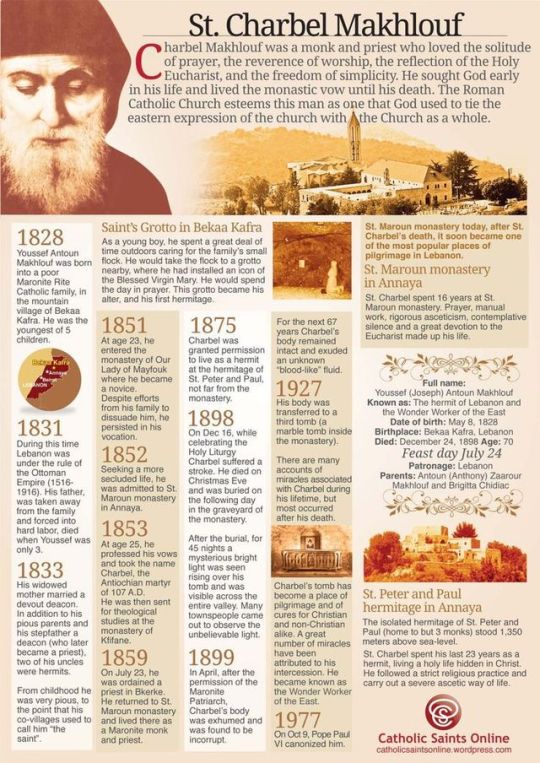

Saint of the Day – 24 July – St Charbel Makhluf O.L.M. Monk, Priest, Hermit, Miracle Worker – The holy monk whose dead body radiated white light – (8 May 1828 at Beka-Kafra, Lebanon as Joseph Zaroun Makhlouf – 24 December 1898 at Annaya of natural causes). St Charbel was Beatified in 1965, at the close of Vatican II and Canonised on 9 October 1977 by Pope Paul VI. Patron of Lebanon.
Youssef Antoun Makhlouf, the fifth child of a mule driver and his wife, he was born at Biqa-Kafra in the mountains of north Lebanon. Orphaned at an early age, he was brought up by an uncle who showed little sympathy for his charge’s devotion to prayer and solitude. Undeterred, in 1851, at the age of 23, Makhlouf entered the monastery of St Maroun at Annaya, taking the name in religion of Charbel, a second-century martyr at Antioch.
For 16 years, he worked hard in the monastery’s vineyards and sang the office at Mass. If Charbel was in any way distinguished from his fellow monks it was in his greater fervour for mortification, his rapt attention at Mass and his constant perusal of Thomas à Kempis’s Imitation of Christ. Although ordained a priest in 1859, Charbel increasingly felt the call to become a hermit. For some years his superiors resisted this ambition. In 1875, however, he removed to a hermitage attached to the monastery. At 4,600 feet above sea level his cell was often freezing; it was clear, however, that suffering and self-obliteration were precisely the graces which he sought. Following his death, the monks who trembled with cold during the night when they kept vigil at his coffin before his funeral, said: “See how we find ourselves unable to endure for a single night, the rude cold of this chapel! How could this priest live here for twenty-three years, on his knees, like a statue before the altar, every night from midnight until eleven in the morning, when he rose to say his Mass? Blessed is he, for he undoubtedly receives at present his reward with God!”
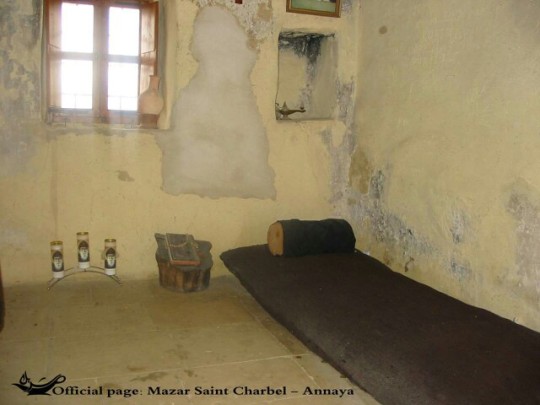
Saint Charbel also gained a reputation for holiness and despite his wish to live in isolation, was much sought for counsel and blessing. He had a great personal devotion to the Blessed Sacrament and the Blessed Virgin and was known to levitate during his prayers. He reportedly never raised his eyes from the ground, his face shrouded by his cloak, unless his gaze was fixed on the tabernacle during the Eucharist.


The week before Christmas, while Saint Charbel was offering Mass, paralysis struck him suddenly as he elevated the Eucharist during the consecration. For one week, he suffered in agony, repeating the prayer he was unable to complete during the Mass: “O Father of truth, behold Your Son, victim to please You; condescend to approve [this offering], because for me He endured death, to give me life…”
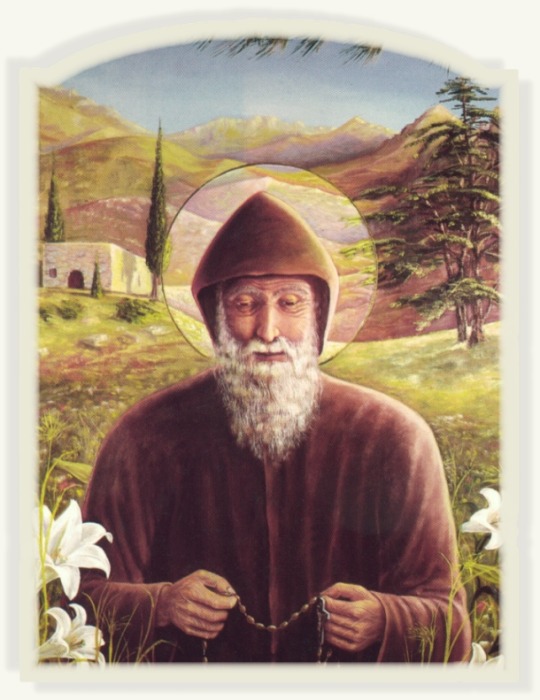

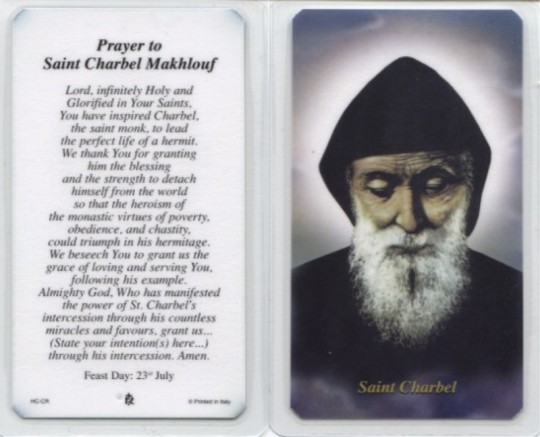
When Charbel died, aged 70, he was interred in the monastery cemetery, without a coffin, as was customary. On the evening of his funeral, his superior wrote: “Because of what he will do after his death, I need not talk about his behavior.” Over the next 45 days, however, it seemed to many observers that the place where his body lay was irradiated by white light. After four months it was decided to open the grave. Charbel’s cadaver was found to be perfectly preserved notwithstanding floods which had turned the area into a sea of mud.
The corpse was re-clothed and installed in the monastery chapel. Now, a strange liquid was secreted from the pores of the dead man’s skin, making it necessary regularly to change his garments. An examination conducted in 1927 by doctors of the local French medical institute found that the body was still incorrupt. At this stage it was transferred to a new zinc-lined coffin, which was placed inside the wall of an oratory.
In 1950 a liquid was observed to be oozing from a corner of the tomb. Another examination discovered a viscous fluid in the bottom of the coffin. And while subsequent investigations have revealed a body no longer incorrupt, the bones have mysteriously turned red.
Hundreds of cures have been, and still are, reported by those who visited Charbel’s tomb. He was canonised in 1977.

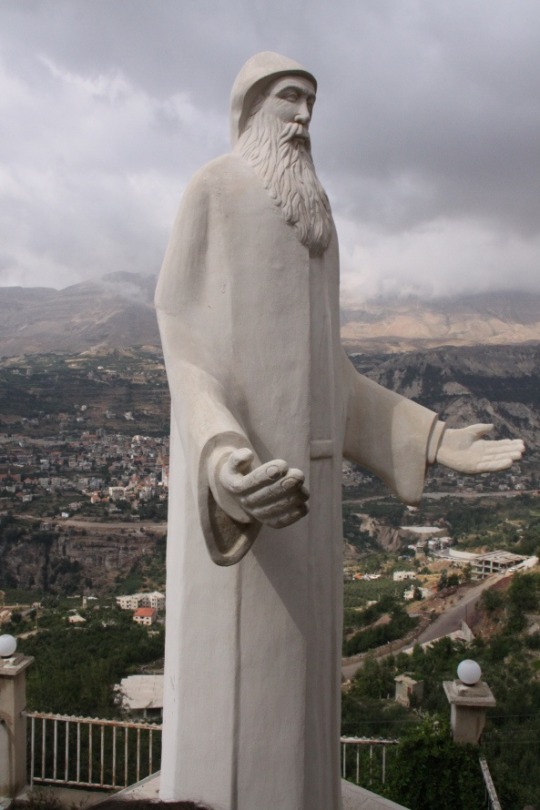
(via AnaStpaul – Breathing Catholic)
24 notes
·
View notes
Photo
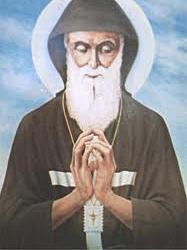
Saint Charbel Makhlouf - Feast Day: July 24th - Ordinary Time - Hermit
1-The Birth of Saint CHARBEL :
Youssef Antoun MAKHLOUF was born on May 8, 1828 in BKAAKAFRA (North Lebanon) from Maronite parents. They are Antoun Zaarour MAKHLOUF and Brigitta CHIDIAC. He has two brothers: John and Beshara, and two sisters: Kawn and Wardeh. Youssef was grown-up on Christian beliefs which made him infatuated with prayers since his childhood. He was inclined to a hermit and monk kind of life, following the path of his hermit uncles who were living in solitary in the hermitage of Saint Antonius of Kozhayah, where they handed him the championship torch of virtues.
His father passed away on August 8, 1831 in Gherfin, it is a village near AMCHIT, on his way back home after he was working in corvée for the Turkish Army, so his mother raised him as an orphan. Then she was married to Lahoud Ibrahim who became the priest of the parish, choosing the name ABDELAHAD.
Youssef studied the principals of Arabic and Syriac in the school of the village. He was very pious, to the extent that his co-villagers used to call him the “Saint”. He used to take his small herd daily to the prairies and then he would go to a grotto where he would kneel in front of the Virgin Mary Icon and pray and so this grotto became his alter and his first hermit which became later a chapel for prayer and pilgrimage for believers.
His joining the Lebanese Maronite Order :
On the morning of one day in the year 1851, Youssef left his parents and his village. He headed for Lady of Mayfouk monastery in the aim of becoming a monk where he spent his first preparatory year and then he went to St. Maroun’s monastery-Annaya, where he joined the Corps of the Lebanese Maronite Order, choosing the name Charbel, one of the martyrs of the second century in the Antioch Church. On the first of November in the year 1853, he revealed his monastic vows in the same monastery. He was then well informed of the precise obligations of these vows: obeying, chastity & poverty.
He continued his theological studies in the Monastery of saint Kouberyanous and Justina, Kfifan-Batroun, under the care of his teacher the saint Nehemtallah Kassab Elhardiny, who was the ideal for the monks and a living image of the great Sanctified Monks in his private & public life.
On July 23, 1859 Brother Charbel MAKHLOUF was ordained a priest in BKERKY, by putting the hand of the triple-merciful Archbishop Youssef ElMarid, Vicar of the Maronite Patriarchy.
His life in Saint Maroun’s Monastery-Annaya and in St Peter & Paul hermitage :
Father Charbel lived in St. Maroun’s Monastery-Annaya for a period of sixteen years. He was obedient to his superiors, sticking to his monkhood law precisely. He was ruthless on himself by living strict austerity and mortification. He denounced all worldly materials in the earthly life, to go to serve his Lord and the salvation of his soul.
During the year 1875 God inspired father Charbel to live in the hermitage in St. Peter and Paul which belongs to St. Maroun’s Monastery-Annaya, in spite of the fact that the superiors usually, do not allow seclusion in the hermitage easily. While the father superior was hesitating, he received a sign from heaven visualized by the miracle of the lamp. As one night, Priest Charbel asked the servant to fill the lamp with oil, but instead of oil he filled it with water. But the lamp gave light ordinarily. This miracle opened the sequence of the Charbelite’s miracles, and approached the day destined for the hermit to go to his desired secluded home.
On Feb. 15, 1875 priest Charbel moved definitively to the Hermitage, where he was the model of a saint and a hermit, spending his time in silence, prayer, worship and manual labor in the fields. He never left the Hermitage except in a permission of his superior. He followed the life path of the Saints hermit fathers, kneeling on a dish of canes in front of the Eucharist, whispering to it and inebriated by it throughout the nights. He spent 23 years in the hermitage, dedicating himself to the service of his Lord, applying the rules of hermits with precision and full consciousness. During the holy ceremony on December 16, 1898 he was struck by hemiplegia, and entered in a duel with the illness which remained for 8 days, during which he endured the terrible pains of struggle with death calmly, silently in spite of the severe aches. In his struggle Father Charbel continued his prayers which he could not finish in the mass: “Father of righteousness, here is Your son a pleasing sacrifice!...” he would repeat as well the names of Jesus and Mary , St Joseph and Peter and Paul the Patron Saints of the hermit.
The spirit of St Charbel flew free, liberated going back to the dwelling of the Lord, just like the return of the drop of dew to the wider ocean, on the 24th of December 1898, on Christmas Eve. He was buried in the burial area of St Maroun’s Monastery- Annaya.
The mysterious light radiating from his tomb :
After his death spiritual lights radiated from his tomb the reason for which his corpse which was perspiring sweat and blood; was transferred into a special coffin, after the permission of the Maronite patriarchate, and he was placed in a new tomb, inside the monastery. At that point groups of Pilgrims flocked soliciting his intercession. God blessed many of these by healing them and endowing them by other spiritual blessings. In the year 1925, a petition was raised to canonize him and declare his sanctity before his beatification Pope Pius XI, by father superior Ighnatious Dagher Tannoury, and his Vicar father Martinous Tarabay, where his plea was accepted as well as father Nehemtallah Kassab Elhardidni and Sister Rafca Elrayess in the year 1927. In 1950 the grave of St. Charbel was opened, in the presence of the Official Committee and Certified Doctors. They verified the wholeness of the corpse, and they wrote a medical report and put it in a box inside the coffin. All of a sudden, the healing happenings increased numerously and in an amazing way. Tens of thousands of pilgrims of different sects and rites flocked Annaya monastery requesting the intercession of the Saint.
The prevailing of virtues and miracles of Saint Cahrbel world wide :
St. Charbel miracles surpassed the boarders of Lebanon, and the Letters and reports kept in St. Maroun’s Monastery – Annaya are lucid evidence on the widespread of his sanctity all over the world. This unique phenomenon induced a comeback to good morals and a return to faith and a revival of virtues in the souls of people, and St Charbel Graveyard the center of attraction to all people of different social class and ages, and all became equal before him by prayers and piety, with no separation in religion or rite or sect. For him they are all called the Sons of God. But the curing registered in the records of St Maroun’s Monastery – Annaya achieved by God thru the intercession of Saint Cahrbel exceeds tens of thousands, excluding the healings widespread Worldwide to all colors, religions and sects, and these are not registered in the Monastery records. Ten percent of the curing were done to those not even baptized, and each cure was done in a different way, either by prayer and requesting intercession, or by oil and scent, or by the oak leaves of the hermit, or from the soil taken from his graveyard, or by visiting his grave and just touching the door of his tomb, or through his icon or statue. Some of these healings were on the physical level, but the most important is the spiritual healing of how many repentant returned to his God by the intercession of St. Charbel, just by the first step into the threshold of St. Maroun’s Monestary- Annaya or the hermit of St. Peter & Paul.
8 notes
·
View notes
Text
Charbel Makhlouf, il santo monaco libanese
Charbel Makhlouf, il santo monaco libanese
Il grande taumaturgo ed eremita libanese san Charbel Makhlouf visse una quotidianità fuori dall’ordinarietà. C’è chi lo ha definito “il Padre Pio d’Oriente”.
(more…)
View On WordPress
#Charbel Makhlouf#Charbel Makhluf#fama di santità#Georges Chokrallah#miracoli#Nimatullah Youssef Kassab#odor di santità#Patrizia Cattaneo#prodigi#santi e beati#santità#taumaturgo
0 notes
Text
Nearly 300 Intellectuals Mobilize Against the Rise of a ‘Fascist Climate’ in Lebanon
The following text is translated from the original article in L’Orient Le Jour and entitled ‘Près de 300 intellectuels se mobilisent contre l’émergence d’un « climat fasciste » au Liban‘. Note that the petition is still open so there are more names being added as we speak. For the Arabic version, click here.
This initiative comes after the polemic surrounding refugees that has degenerated in the past two weeks on social media, notably after the death under torture of Syrian detainees, an issue brought up by many human rights organizations in the aftermath of a raid launched by the Lebanese authorities in Arsal refugee camp.
The polemic was quickly replaced by a wave of hatred accompanied by a xenophobic discourse and culminating in a video showing Lebanese citizens beating up a Syrian refugee, men who were later arrested.
Journalist, writer and poet Youssef Bazzi, who is among those at the origin of the petition, explains that “the objective is not only to rise up against ongoing racist practices”. “Beware! A fascist climate, a militaristic and repressive climate, is slowly taking place. It does not merely aim at supporters of the Syrian revolution or at those who oppose Hezbollah’s interference in Syria”, Bazzi tells L’Orient-Le-Jour, adding that Lebanon is currently suffering from power dynamics in Syrian, currently favoring the Syrian regime and Hezbollah.
Youssef Bazzi adds:
“This climate is an extension of a political atmosphere recently created by those in power, by a political elite that, despite its differences, agrees to remain in power. There exists as well a will to smother any attempts by the civil society to address important topics such as the defense of the constitution, the rule of law, civil liberations and the public order. The problem is therefore not limited to racist practices towards refugees, it goes back to the very essence of our Lebanese identity. Must our identity be compartmentalized and full of hate, or founded on values?”
For the writer, it goes without saying that Lebanese society needs to multiply its cultural, legal, political and humanitarian initiatives to create a real public opinion and reverse the rising trend.
The letter reads:
We, the underlined Lebanese activists, writers, intellectuals, journalists and artists, based on our faith in a Lebanon of freedom, pluralism and that respects human rights, and on our conviction that the national army must be the only armed entity in this country, categorically reject and condemn certain disgusting practices against Syrian civilians that were forced to find refuge in Lebanon.
What follows these practices, such as the campaigns of incitement to hatred against Syrians across social media and in certain media outlets, or via declarations by certain politicians, is no less ugly as the criminal practices themselves. These do not just attack Syrians but the image of Lebanon itself and the conscience of the Lebanese. This does not represent us, but puts us in front of extreme options, including the need to purge our patriotism from its chauvinism. The position adopted towards refugees must become one of the criteria of our patriotism through which we want to consolidate democracy and the respect of human rights.
List of signatories so far [If possible, I would like to add my name to the list]
Ahmad Ismaïl, Ahmad Soueissi, Ahmad Issawi, Ahmad Kaabour, Ahmad Fayçal Sankari, Ahmad Mrad, Oussama Wehbé, Ismaïl Charafeddine, Akram Zaatari, Akram Arawi, Akram Mahmoud Mahmoud, Alexandra Habib, Alexandre Paulikevitch, Élias Bejjani, Élias Khoury, Élias Fawz, Aline Milad el-Chami, Amal Takouch, Émile Menhem, Indira Matar, Antoine Abou Zeid, Antoine Haddad, Antoine Courban, Aya Naboulsi, Élie el-Hage, Ayman Hmeïdane, Ayman Nahlé, Bachar Haïdar, Bachar Ziad Halabi, Béchara Charbel, Béchara Atallah, Paul Taber, Bachir Osmat, Boutros Moawad, Bikr Solh, Bissane el-Cheikh, Taymour Brich, Thaër Ghandour, Jad Yateem, Jacqueline Saad, Jean-Pierre Frangié, Jamal Assi, Joumana Haddad, Jamil Hammoud, Georges Massouh, Joseph Badaoui, Gisèle Khoury, Hazem el-Amine, Hazem Saghiyé, Habib Bzeih, Habib Nassar, Habib Darwiche, Houssam Itani, Hassane Hammoud, Hanna Saleh, Hassan Chami, Hassan Kotb, Hassan Krayem, Khaled Hussein el-Houjeiri, Khaled Sbeih, Khaled Izzi, Khaled Yassine, Dalia Obeid, Dana Kahil, Dalal Bizri, Diana Moukalled, Diala Haïdar, Dima Charif, Dima Krayem, Raëd Abou Chacra, Rached Fayed, Rania Jaroudi, Racha el-Atrache, Racha el-Amir, Rafic Ftouh, Roula Mouwaffaq, Rana Eid, Rana Najjar, Rony el-Assaad, Rayane Maged, Rima Maged, Rim el-Jundi, Rima Nakhel, Rida el-Maoula, Rawan Halaoui, Raëd Bou Hamdane, René Moawad, Rouba Beydoun, Roudeina Baalbacki, Zaki Taha, Zahia Safa, Ziad Maged, Ziad Abdel Samad, Ziad Antar, Zeina Mansour, Tarek Tamim, Tarek Succariyé, Tarek Hawa, Talal Khoury, Ralal Tohmé, Tony Chakar, Tony Francis, Sara Chahine, Salem Maarabouni, Samer Dabliz, Saad Faour, Saoud el-Maoula, Samar Mogharbel, Semaan Khawam, Samir Zaatiti, Samir Alwane, Sanaa Salhab, Siham Harb, Souhail Nasser, Sawsan Abou Zohr, Célina Hamadé, Chadi Hanouche, Charles Chehwane, Chadha Charafeddine, Shirine Abou Chacra, Sobhi Amhaz, Sobhi Mahdi Abdallah, Souhaid Jawhar, Abbas Abou Zeid, Abbas el-Jawhari, Abbas Nasser, Abdel Rahmane Ayyas, Abdel Ghani Imad, Abdallah Haddad, Abdel Mottaleb Bakri, Abdel Nasser Succariyé, Abed Kreidiyé, Abdel Wahhab Badirkhan, Adnane Salamé, Izzat Charara Beydoun, Akl Awit, Ali Ahmad Rabah, Ali el-Hajj Sleimane, Ali el-Sayyed, Ali el-Merhebi, Ali Hajo, Ali Hammoura, Ali Zaraket, Ali Charafeddine, Ali Tayy, Ali Cheaib, Ali Izzeddine, Ali Mohammad Hassan el-Amine, Ali Mrad, Ali Makki, Imad Dirani, Imad el-Chidiac, Imad Ftouh, Imad Komeiha, Omar Harkouss, Ghada Araïbi, Ghita Daher, Fady Toufeily, Fady Toufic, Fady Melhem, Farès Khachane, Farouk Yaacoub, Fatima Houhou, Fatima Mourtada, Firas Abou Hatoum, Fadil Hammoud, Fouad el-Mokaddem, Fouad Salamé, Fawzi Zebiane, Fawzi Ferry, Fawzi Yammine, Kassem Kassir, Kassi Charara, Kamal Aziz Nassif, Chrystelle Khodr, Lokman Slim, Louma Rabah, Luna Safwan, Layla Masri Jundi, Liliane Daoud, Lina Sahhab, Mark Daou, Maria Georges Khayssi, Maher Abou Chacra, Maher Itani, Maya Khadra, Maya Fidawi, Mike Ayyache, Mohsen Hussein, Moustapha Ahmad, Moustapha el-Turk, Moustapha Fahs, Mohammad Ahmad Choumane, Mohammad el-Houjeiri, Mohammad el-Aziz, Mohammad Anouar Baassiri, Mohammad Badawi, Mohammad Chami, Mohammad Chbaro, Mohammad Awada, Mohammad Mekkaoui, Mohammad Mikati, Mohammad Hammoud, Mahmoud Soueid, Mahmoud Doha, Mohammad Kassem, Marwan Abi Samra, Marwan Georges el-Najjar, Massoud Younès, Motaz Fakhreddine, Makram Rabah, Manar Wehbé, Manale Nahhas, Mona Jahami, Mona Khoueiss, Mona Fayad, Mohannad el-Hage Ali, Maha Bidawi, Maha Aoun, Monica Borgmann Slim, Mirella Salamé, Michel Hajji Georgiou, Michel Doueihy, Mayssam Hindi, Mimosa Arawi, Nader Fawz, Nafeh Saad, Nadine Labaki, Nadine Ferghol, Nahed Youssef, Nabil Halabi, Nabil Ismaïl, Nabil Abdel Fattah, Nada Abdel Samad, Nadim Houry, Nadim Koteich, Nehmé Mahfoud, Nawal Moudallali, Nour Blok, Hani Minkara, Hachem Adnane, Hoda Husseini Fayed, Hoda Chehabeddine, Hicham Bou Nassif, Hicham Zeineddine, Hanaa Jaber, Hind Darwish, Hovic Habchian, Hiyam Halawi, Haytham Chamas, Haytham Hilal, Wassef Khalaf, Wadih Mazraani, Wissam Saadé, Walid Hussein, Walid Fakhreddine, Yakzan Takki, Yorgi Tayrouz, Youssef el-Khalil, Youssef Bazzi et Yolla el-Hage.
Filed under: Politics & Society
0 notes
Text
Św. Charbel Makhlouf
Św. Charbel Makhlouf urodził się 8 maja 1828 r. w Bekaa-Kafra, w północnym Libanie, jako piąte dziecko biednej ale bardzo religijnej rodziny libańskich chrześcijan obrządku maronickiego. Na chrzcie otrzymał imię Józef (Youssef). Jeszcze jako chłopiec przyszły święty wyróżniał się wielką pobożnością i zamiłowaniem do modlitwy, a sprzyjała temu rodzinna atmosfera wypełniona miłością i modlitwą oraz��
View On WordPress
0 notes